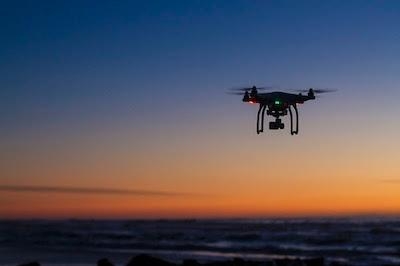Tue, May 21, 2019
Drones May Not Be Flown Closer Than 3,000 Feet Laterally Or 1,000 Feet Above Any Navy Ship
At the request of its federal security partners, the Federal Aviation Administration (FAA) is using its existing authority under Title 14 of the Code of Federal Regulations (14 CFR) § 99.7 – “Special Security Instructions” – to restrict drone operations over select facilities and assets.

The FAA has established special security instructions that restrict drone operations in airspace up to 2,000 feet mean sea level (MSL) near U.S. territorial and navigable waters. These new restrictions specifically prohibit drone flights in this airspace within a stand-off distance of 3,000 feet laterally and 1,000 feet above any U.S. Navy vessel.
UAS operators who violate the flight restrictions may be subject to enforcement action, including potential civil penalties and criminal charges. Violators may also face security enforcement action that results in the interference, disruption, seizure, damaging or destruction of unmanned aircraft considered to pose a safety or security threat to protected U.S. Navy assets.
The restrictions are detailed in Notice to Airmen (NOTAM), and can be found at the UAS Data Display System (UDDS) website. Unmanned Aircraft System (UAS) operators are urged to familiarize themselves with these NOTAMs and to go to UDDS to help them comply with these FAA restrictions, which are put in place to support the nation’s security. UDDS provides precise descriptions of the airspace to which these restrictions are applied, procedures to access this airspace, an interactive map, downloadable geospatial data and other crucial information and tools for UAS operators. A link to these restrictions is also included in the FAA’s B4UFLY mobile app.
The FAA is considering additional requests by eligible federal security agencies for UAS-specific airspace restrictions using the agency’s § 99.7 authority as they are received. Additional changes to these restrictions will be announced by the FAA as appropriate.
UAS operators can find more information on a broader range of issues related to flying drones in the National Airspace System on the FAA’s main UAS website, including answers to frequently asked questions.
(Source: FAA news release. Image from file)
More News
He Attempted To Restart The Engine Three Times. On The Third Restart Attempt, He Noticed That Flames Were Coming Out From The Right Wing Near The Fuel Cap Analysis: The pilot repor>[...]
Make Sure You NEVER Miss A New Story From Aero-News Network Do you ever feel like you never see posts from a certain person or page on Facebook or Instagram? Here’s how you c>[...]
From 2009 (YouTube Edition): Leading Air Show Performers Give Their Best Advice for Newcomers On December 6th through December 9th, the Paris Las Vegas Hotel hosted over 1,500 air >[...]
Aero Linx: NASA ASRS ASRS captures confidential reports, analyzes the resulting aviation safety data, and disseminates vital information to the aviation community. The ASRS is an i>[...]
“For our inaugural Pylon Racing Seminar in Roswell, we were thrilled to certify 60 pilots across our six closed-course pylon race classes. Not only did this year’s PRS >[...]
 NTSB Final Report: Rutan Long-EZ
NTSB Final Report: Rutan Long-EZ ANN FAQ: Turn On Post Notifications
ANN FAQ: Turn On Post Notifications Classic Aero-TV: ICAS Perspectives - Advice for New Air Show Performers
Classic Aero-TV: ICAS Perspectives - Advice for New Air Show Performers ANN's Daily Aero-Linx (06.28.25)
ANN's Daily Aero-Linx (06.28.25) Aero-News: Quote of the Day (06.28.25)
Aero-News: Quote of the Day (06.28.25)



